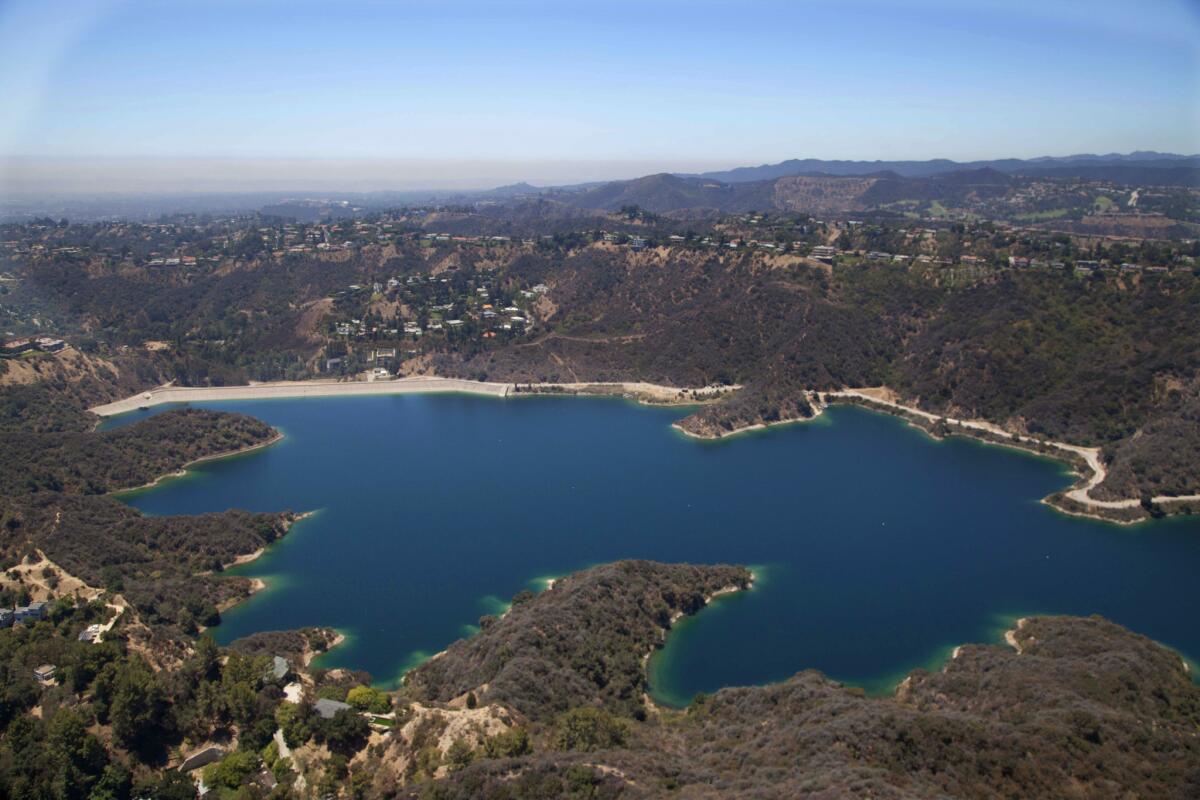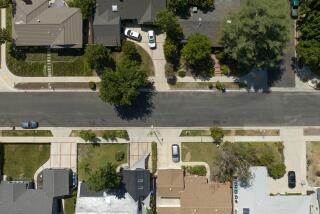Bel-Air water hogs spur move to impose stiff penalties on L.A. guzzlers

Stone Canyon Reservoir is situated near Bel-Air and other neighborhoods. The biggest water user in the state lives in Bel-Air and uses 12 million gallons of water a year.
Water hogs, beware.
The Los Angeles Department of Water and Power agreed Wednesday to study ways to curb excessive water use after the City Council called for a crackdown that could include “severe financial penalties” and “as a last resort, shutting off water.”
The council approved a motion by Councilman Paul Koretz asking LADWP to report back within 30 days on measures that can be taken to stop water abuse.
Water and Power is The Times’ guide to the drought. Sign up to get the free newsletter >>
Amid the epic drought, there have definitely been some hoses running — and running and running — in Koretz’s district, which includes Bel-Air, where four of California’s top five single-family residential water users live, according to the Center for Investigative Reporting.
Koretz has said he was horrified to learn that the single biggest water user in the state lives in Bel-Air, sucking up about 1 million gallons a month (enough for 90 average households).
In a council meeting Wednesday, Koretz went for the dramatics, propping a trash can up on a table next to two coffee mugs to represent the difference in consumption between that person and the average water user. He said he was “taking responsibility for the extravagant and embarrassing use of water in my district.”
“It’s a slippery slope to move toward a time where water is only for those who can most afford it,” Koretz said.
“I don’t care what else you do in these mansions, but when hard-working Angelenos from all walks of life are ripping out their lawns, putting buckets in their showers with them in order to water their plants and flushing their toilets only once a day, it’s not only unfair, it’s ridiculous.”
He said the elusive biggest water user remains unknown but guessed what he or she must be like.
“I’m assuming they have four swimming pools, they empty them out with frequency, they have non-recirculating fountains and they have a giant property full of grass that is watered on a daily basis,” he said.
Koretz proposed steep water penalties and, if those don’t work, a water-use cap that, if reached, would result in water being shut off.
LADWP water system manager Marty Adams said the issue of individual water waste by flagrant users “is something we have to find a way to get our arms around.” The department, he said, has tried outreach, sending out 4,600 letters to the top 1% of their water users and has upped patrols of high-use areas, “but clearly not everyone is getting the message.”
Adams said the city still imposes conservation rules that were written 15 years ago, before there were “so many mega-properties and mega-users.” While a “large water bill doesn’t necessarily mean waste,” officials will look into changing conservation ordinances and better ways to measure water use, Adams said.
Twitter: @haileybranson | Google+
ALSO:
El Niño keeps getting stronger, raises chance of drenching rains
Amid protests, drought rule requiring paper plates at restaurants lifted
Cities and private equity firms fight over ownership of water systems
More to Read
Sign up for Essential California
The most important California stories and recommendations in your inbox every morning.
You may occasionally receive promotional content from the Los Angeles Times.











